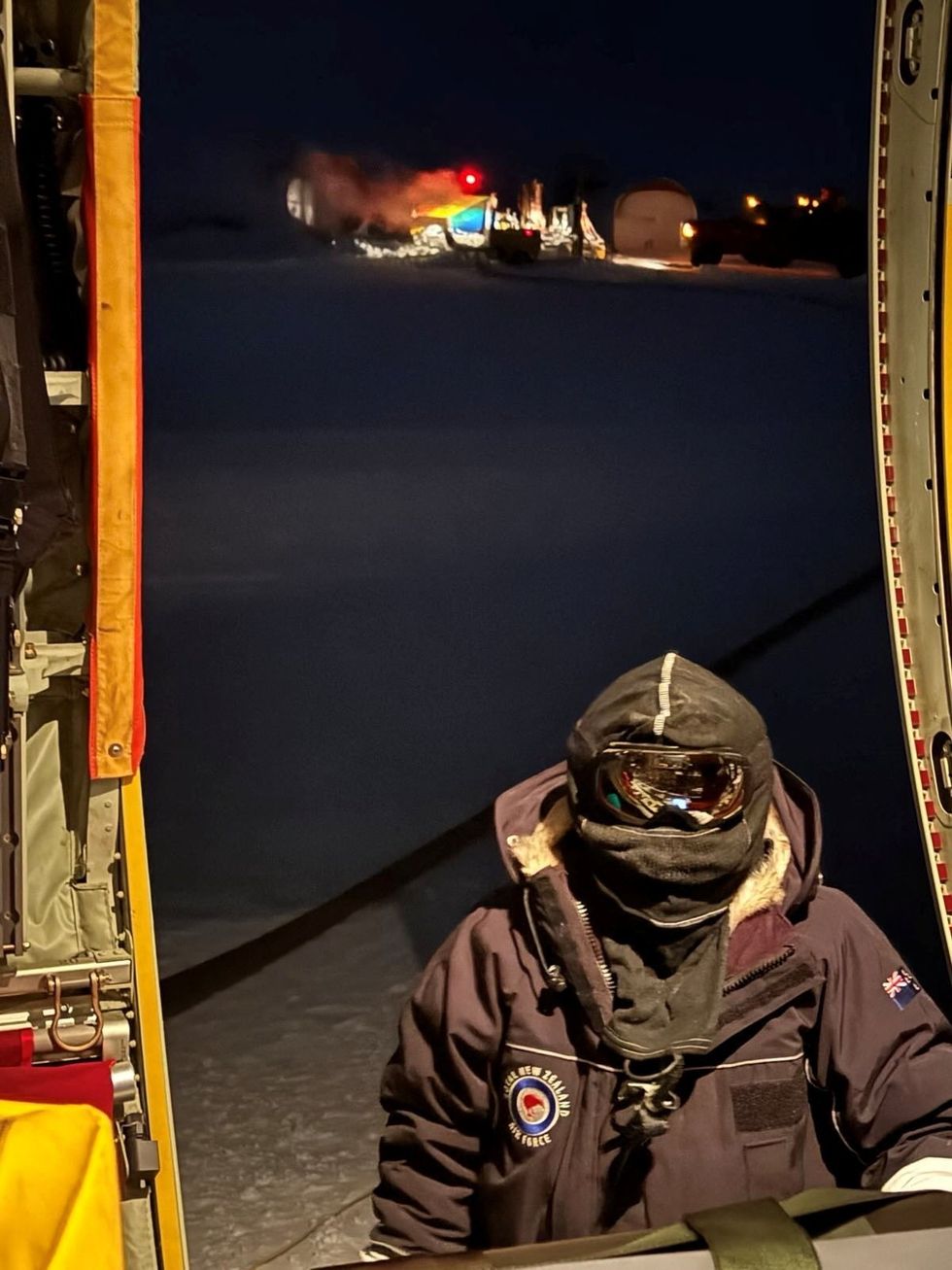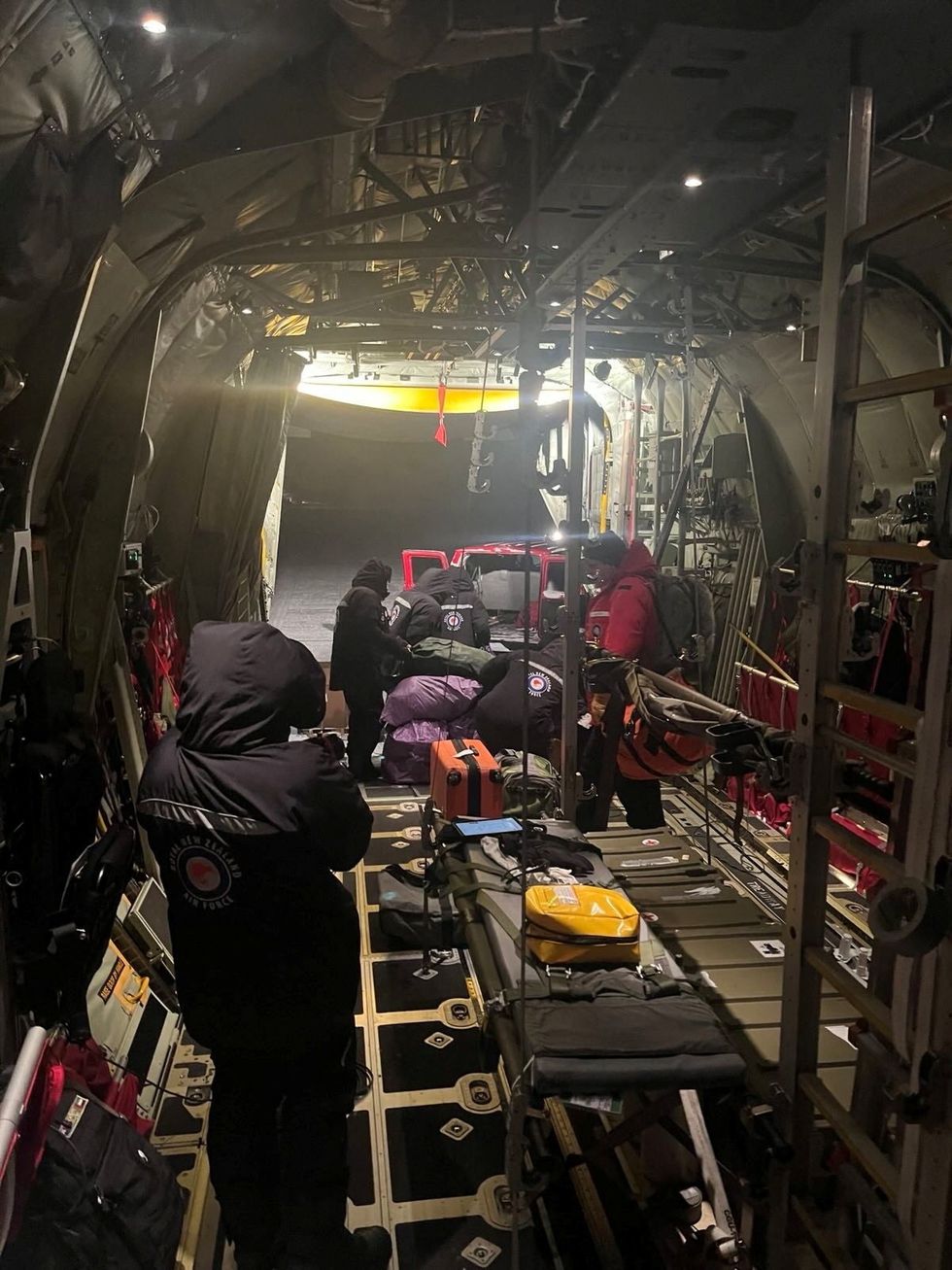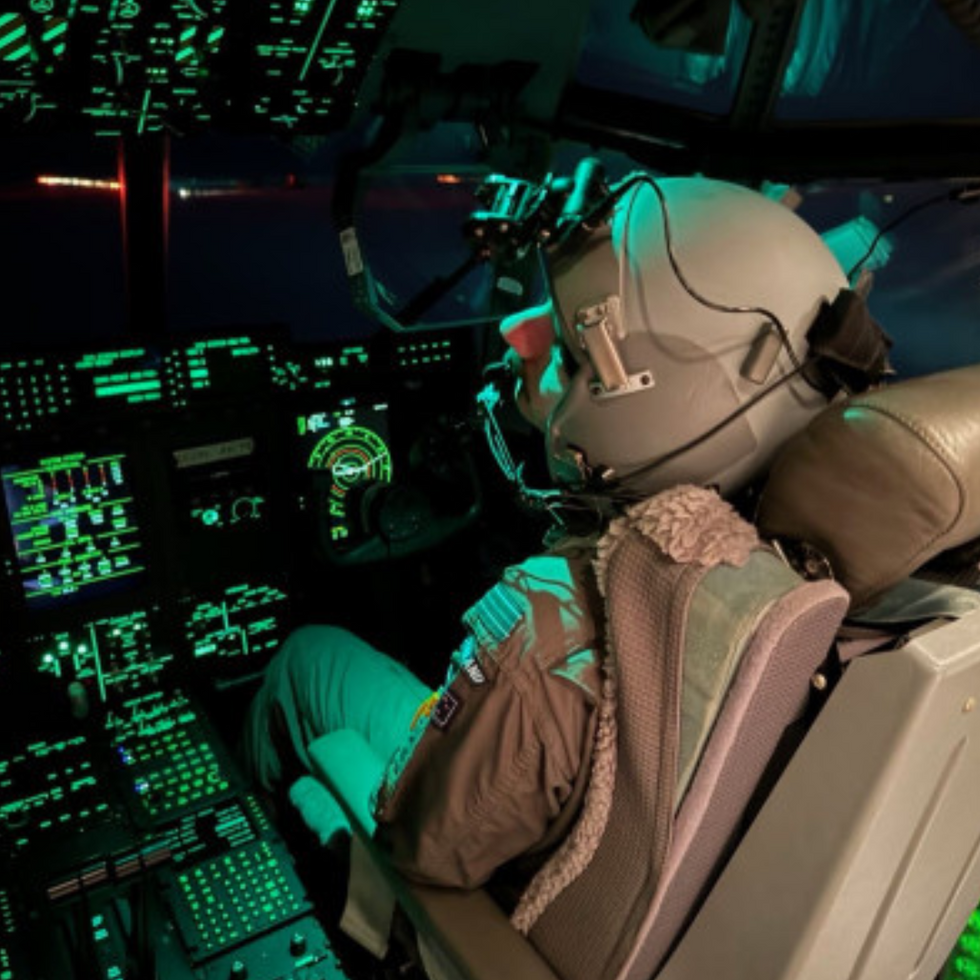



A team of brave Royal New Zealand Air Force personnel has made a 5,000-mile round-trip in total darkness to rescue three American scientists from Antarctica.
RNZAF troops set out through volatile weather and 24-hour night on Wednesday to save the trio from the US's McMurdo Station amid a medical emergency.
A statement from the New Zealand Defence Force confirmed that one person in need of "urgent" medical care and two others needing medical attention were taken back to the country from Antarctica.
The emergency call-out was requested by the American National Science Foundation - though no details have emerged of the medical issues so far.

NEW ZEALAND DEFENCE FORCE
|RNZAF crew donned night vision goggles to make it to Antarctica
McMurdo usually hosts some 200 people during the Antarctic winter, but is said to be unequipped to handle major emergencies.
But when the health scare happened, the Kiwi team scrambled a C-130J Hercules transport aircraft from Christchurch to Antarctica - a 2,400-mile trip.
Its crew, equipped with night vision goggles, flew almost as far as the distance from London to the North Pole in difficult weather conditions and total darkness, Air Commodore Andy Scott said.
Scott said that evacuations during the Antarctic winter are among the most challenging the RNZAF can make.
Temperatures sink to some -70C in some parts of Earth's southernmost continent - while violent storms can appear in a matter of minutes.

NEW ZEALAND DEFENCE FORCE
|The NZ plane flew almost as far as the distance from London to the North Pole in difficult weather conditions and total darkness

NEW ZEALAND DEFENCE FORCE
|Once the team arrived in Antarctica, the plane's engines were left running to keep them warm while refuelling in a bid to stave off the ice
The journey also contains a "point of no return" - a point after which there are no airfields where the crew can divert the aircraft if needed.
Scott said: "It's still an extremely challenging environment to fly in on night vision goggles due to the extreme weather conditions, which are highly changeable at this time of year and makes accurate forecasting a challenge.
"This, coupled with there being no airfields available to divert to once the aircraft is past a certain point south adds to the risk, so these missions are not taken lightly.
"With the support of Antarctica New Zealand and United States' National Science Foundation staff in Antarctica, we have been able to complete the flight and the patients are now getting the medical treatment they need in Christchurch."

NEW ZEALAND DEFENCE FORCE
|The team made it past the 'point of no return' to rescue the Americans

NEW ZEALAND DEFENCE FORCE
|Crew were left waiting for a specific weather window for days so they could safely complete the flight
A New Zealand Defence Force statement confirmed how a doctor travelled aboard the flight to rescue the scientists.
The Hercules craft had been pre-positioned from Auckland to Christchurch on Sunday afternoon, with the crew waiting for a specific weather window in which they could safely complete the flight.
On Tuesday afternoon, the crew made the decision to fly.
Once the team arrived in Antarctica, the plane's engines were left running to keep them warm while refuelling in a bid to stave off the ice.
In total, the evacuation took some 19.5 hours to complete.
